Phytec LAN-087e.A2 phyCORE-i.MX 8 Alpha Kit User manual
Other Phytec Microcontroller manuals
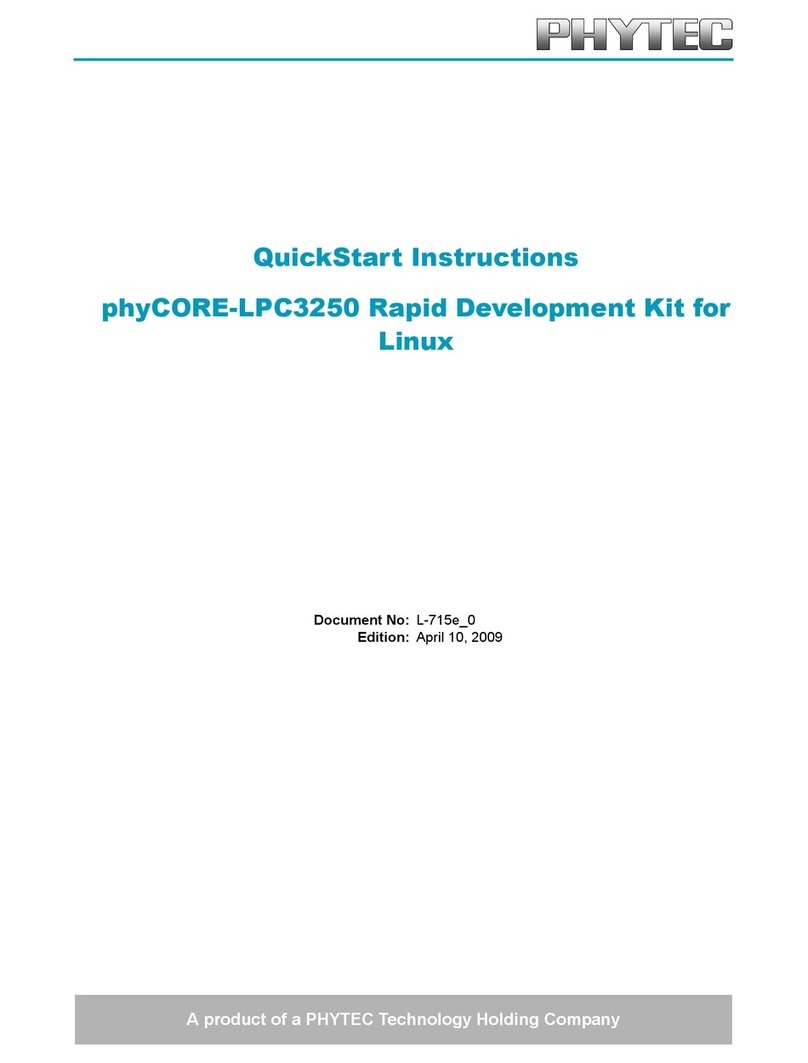
Phytec
Phytec phyCORE-LPC3250 Programming manual
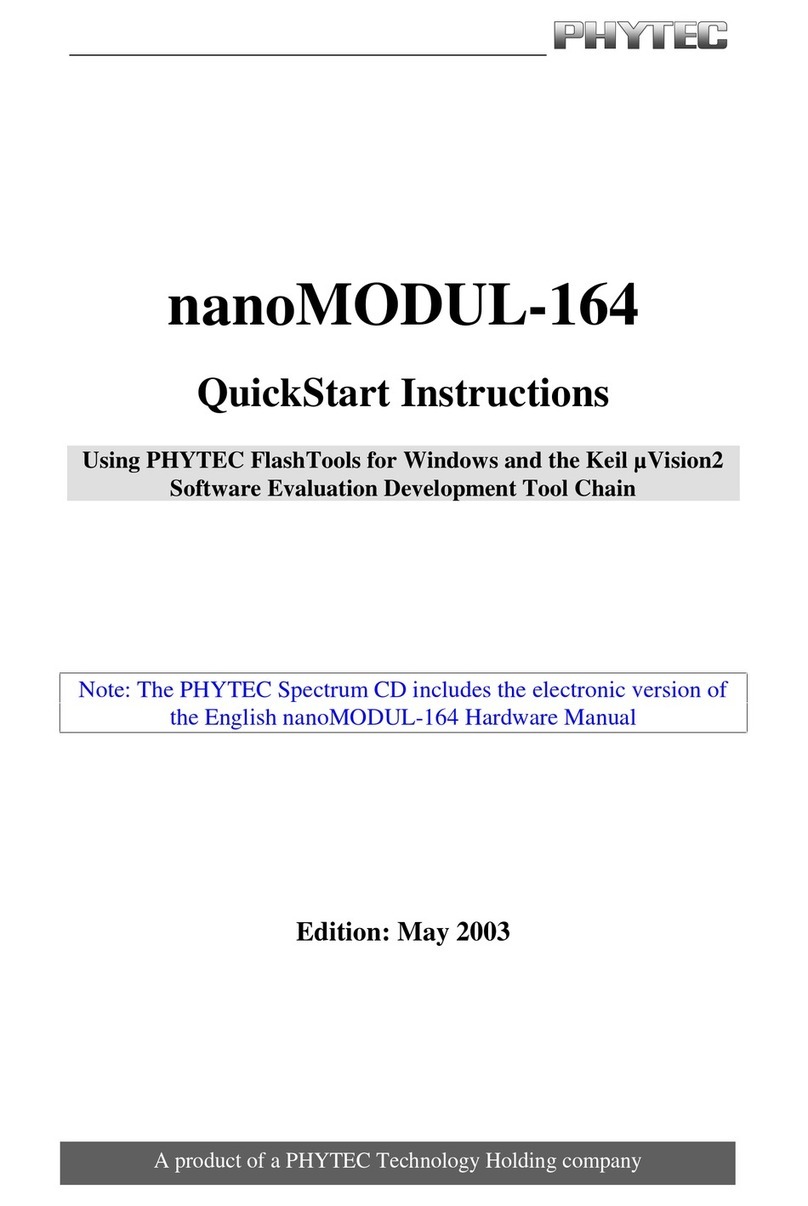
Phytec
Phytec nanoModul-164 Programming manual
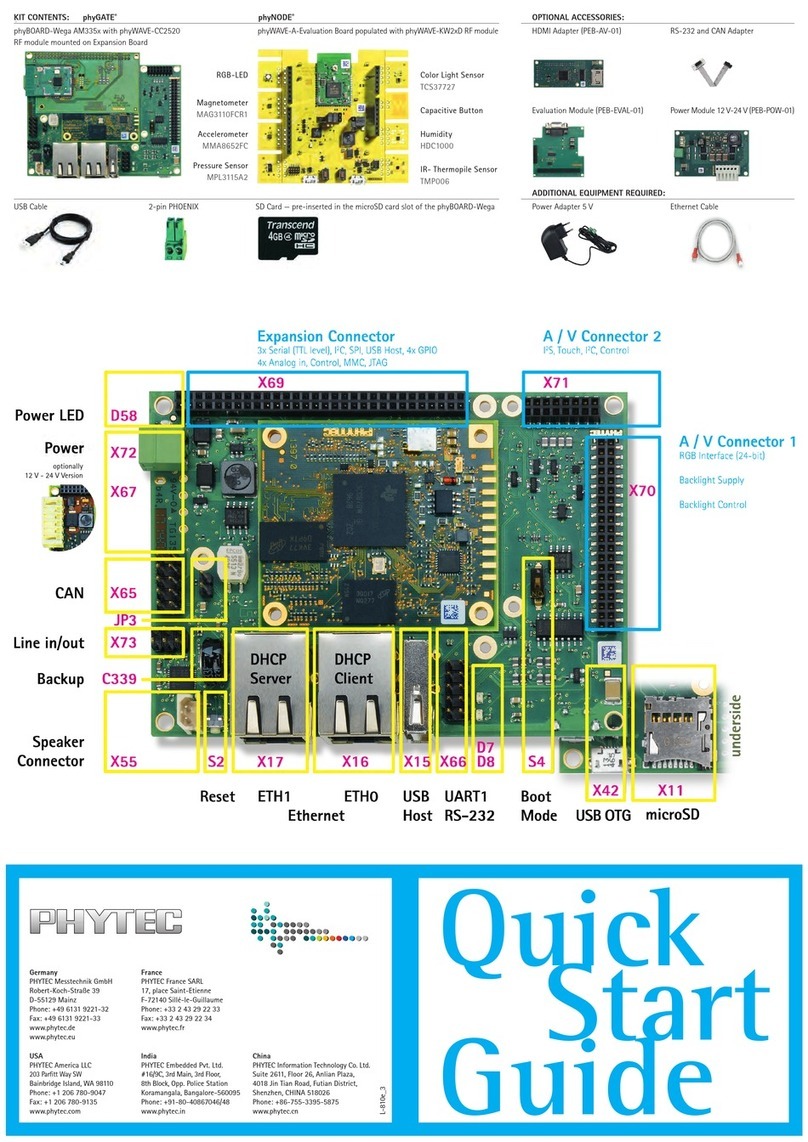
Phytec
Phytec IoT-Enablement-Kit 1 User manual
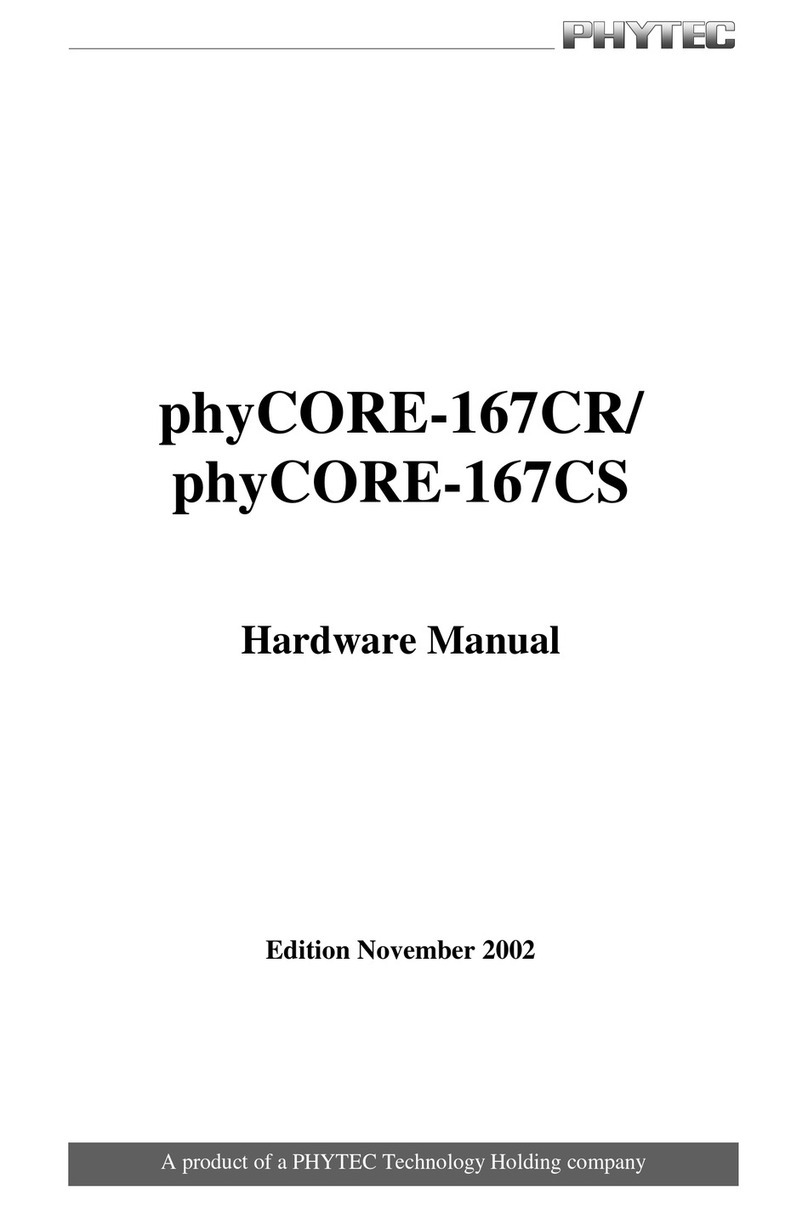
Phytec
Phytec phyCORE-167CS User manual

Phytec
Phytec SYS TEC ELECTRONIC CANopen Chip164 Programming manual
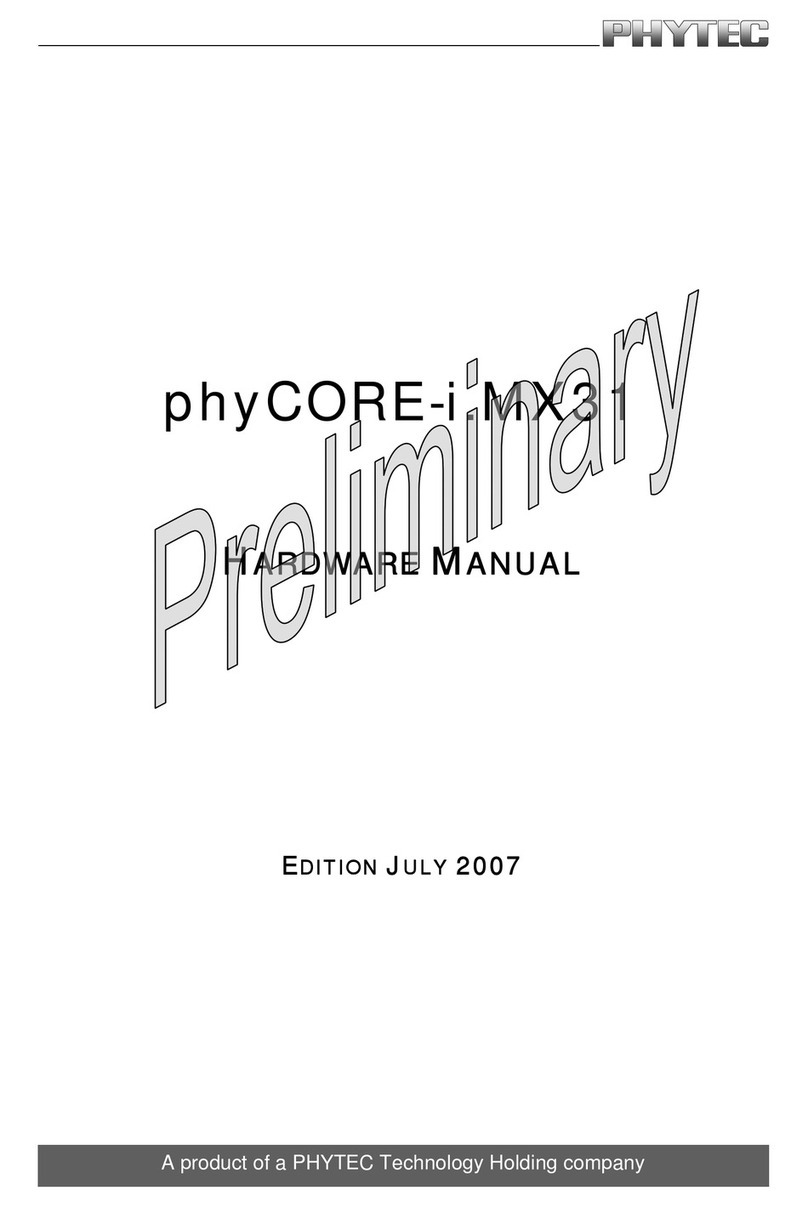
Phytec
Phytec phyCORE-i.MX31 User manual

Phytec
Phytec phyCORE-XScale/PXA255 Installation and operating instructions
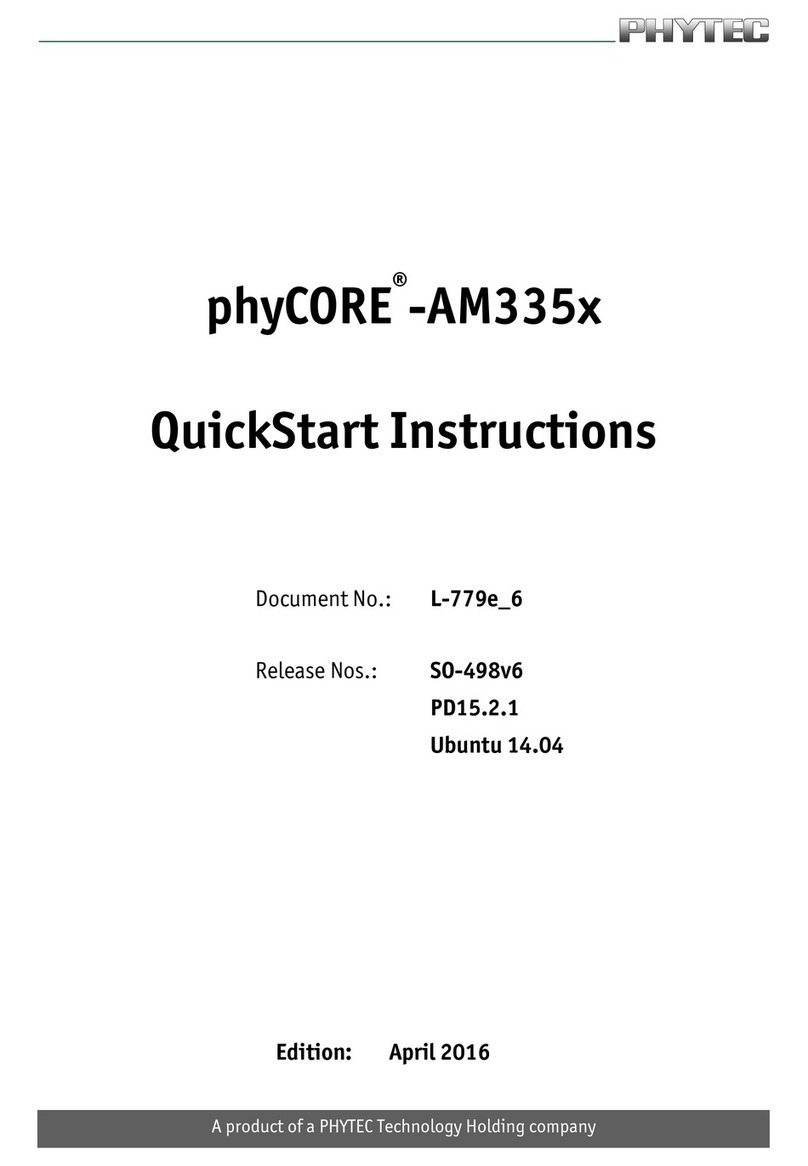
Phytec
Phytec phyCORE-AM335x Programming manual
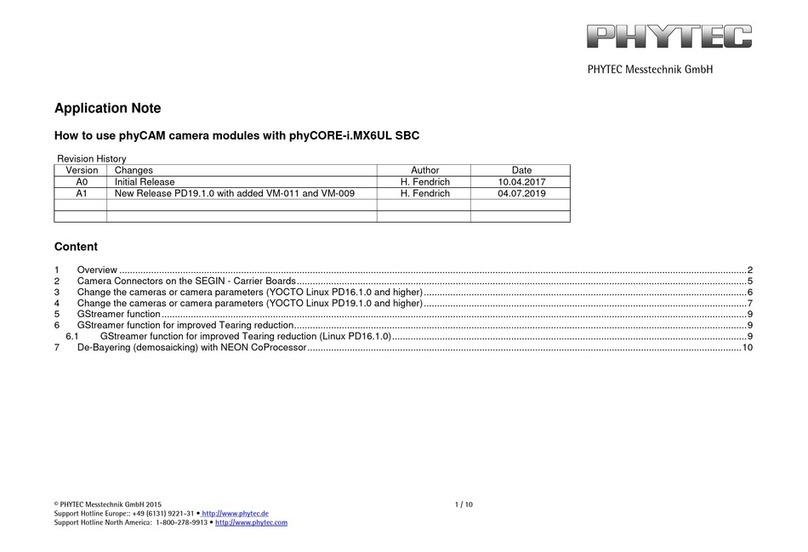
Phytec
Phytec i.MX6UR User manual
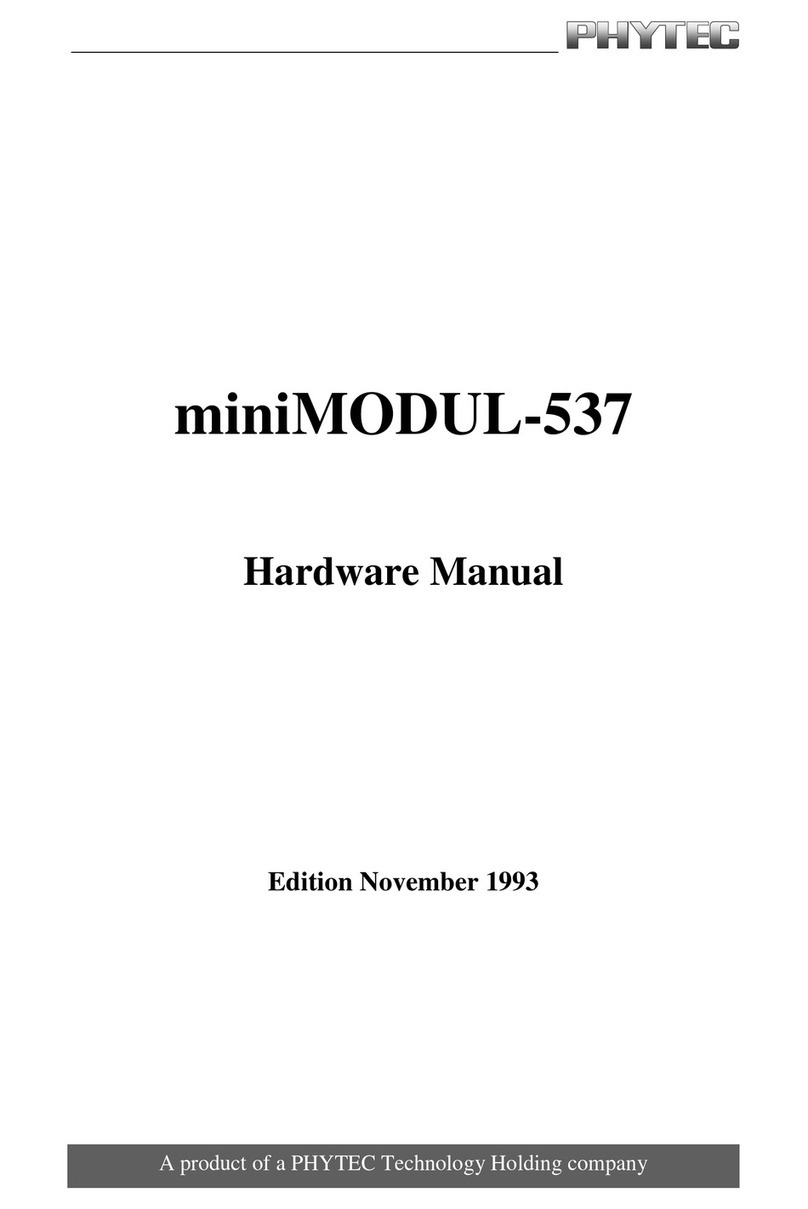
Phytec
Phytec miniMODUL-537 User manual
Popular Microcontroller manuals by other brands

DIGITAL-LOGIC
DIGITAL-LOGIC MICROSPACE manual

Texas Instruments
Texas Instruments TMS320F2837 D Series Workshop Guide and Lab Manual

CYPRES
CYPRES CY14NVSRAMKIT-001 user guide

Espressif Systems
Espressif Systems ESP8266EX Programming guide

Abov
Abov AC33M8128L user manual
Silicon Laboratories
Silicon Laboratories C8051F800 user guide

























